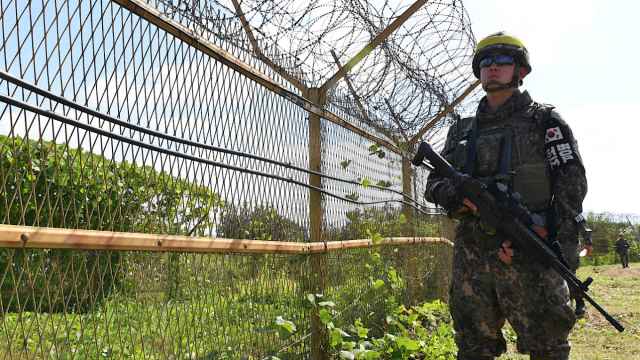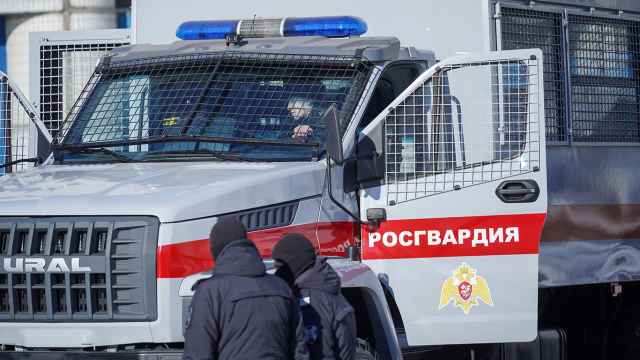WASHINGTON — U.S. military officials insisted a top-secret Pentagon study proved the need to buy Russian helicopters for Afghanistan's security forces. But the study actually recommended an American-made rotorcraft, according to unclassified excerpts obtained by The Associated Press.
The excerpts show the U.S. Army's workhorse Chinook, built by Boeing in Pennsylvania, was "the most cost-effective single platform type fleet for the Afghan Air Force over a 20-year" period.
The finding has triggered allegations that the Department of Defense, or DOD, misled members of Congress and improperly cut U.S. companies out of competing for a contract that has swelled to more than $1 billion.
More than two years since the DOD announced it was acquiring Russian Mi-17 helicopters, a veil of secrecy still obscures the pact despite its high-dollar value, the potential for fraud and waste, and accusations that the Pentagon muffled important information.
The unprecedented arms deal also serves as a reminder to a war-weary American public that Afghanistan will remain heavily dependent on U.S. financial support even after its combat troops depart.
Senator John Cornyn of Texas, the Senate's No. 2 opposition Republican, said the DOD "repeatedly and disingenuously" used the 2010 study to justify the Russian helicopter as the superior choice for the Afghans.
Congress only recently received a copy of the document.
"So why are we buying Russian helicopters when there are American manufacturers that can meet that very same requirement?" Cornyn asked
Praise for Mi-17
As recently as September, Deputy Defense Secretary Ashton Carter cited the study in a letter to House members, defending the Mi-17 decision. Carter left his job this past week.
Last year, Frank Kendall, the Pentagon's top acquisition official, and policy chief James Miller pointed to the study in a written response to questions posed by Cornyn.
Just a few weeks after the secret study was completed, Army Secretary John McHugh wrote in a 2011 memo "that the Mi-17 stands apart" when compared with other helicopters.
The Pentagon denies it misled Congress.
A senior department official said the study was focused on long-term requirements and not the immediate needs of the Afghan military, which were best met by the Mi-17. Also, U.S. commanders in Afghanistan wanted the Mi-17 because it is durable, easy-to-operate and the Afghan forces had experience flying it, according to the official, who was not authorized to be identified as the source of the information.
There is no dispute that heavy-duty helicopters capable of quickly moving Afghan troops and supplies are essential to accomplishing that mission. But the decision to acquire them from Russia has achieved the rare feat in a deeply divided Congress of finding common ground among Republicans and Democrats.
Why Russia?
Why, lawmakers from both political parties have demanded, is the U.S. purchasing military gear from Russia?
After all, Russia has sold advanced weapons to repressive government in Syria and Iran, sheltered National Security Agency leaker Edward Snowden and been criticized by the Department of State for adopting laws that restrict human rights.
On top of all that, corruption is rampant in Russia's defense industry, they say, heightening concerns that crooked government officials and contractors are lining their pockets with American money.
"The lack of straightforward information from the Pentagon on the ability of American-made helicopters to meet the mission in Afghanistan is but another factor severely undermining their credibility and justification for pursuing this sorely misguided procurement," said Republican Rosa DeLauro, a high-ranking Democrat on the House Appropriations Committee.
Overall, 63 Mi-17s are being acquired through the 2011 contract. It was awarded without competition to Russia's arms export agency, Rosoboronexport, even though the Pentagon condemned the agency after its weapons were used by Syria to "murder Syrian civilians."
No Pentagon official was made available to speak on the record for this story. The department declined AP's request that it release unclassified portions of the 2010 study and other records supporting the decision to buy Mi-17s instead of Chinooks or other helicopters.
The armed Mi-17s being purchased for Afghanistan from Rosoboronexport will replace older and less capable Mi-17s the U.S. and other countries had purchased from brokers and contractors through the open market and then donated or loaned to the Afghans.
Familiarity Factor
The fact that the Afghan forces had years of experience flying the Mi-17 figured prominently in the Pentagon's decision.
Carter and other U.S. defense officials contended that adding the Boeing helicopter to the mix would unnecessarily burden the Afghans with having to learn how to operate and maintain an unfamiliar helicopter.
The 2010 study "specifically analyzed the opportunity for the DOD to provide a U.S. alternative to the Mi-17 for Afghanistan," according to the excerpts.
It outlined a transitional approach in which Chinooks being retired from the U.S. military's fleet would be available in late 2013 to be refurbished and then replace older Russian helicopters in the Afghan fleet, according to the excerpts. A combination of Mi-17s and renovated Chinooks, known in the army's nomenclature as the CH-47D, could work as well.
Proceed with caution, the study advised. Shifting too quickly away from the Mi-17s already in use could undermine progress in training the Afghan Air Force, the excerpts said. But the study recommended a plan for converting the Afghan forces from a "pure" Mi-17 fleet to one that uses U.S. helicopters.
The Chinook option never materialized.
An extensive analysis of both helicopters concluded a refurbished Chinook would cost about 40 percent more overall to buy and maintain than the Russian helicopter, the senior defense official said.
That is hard to fathom.
Boeing executives informed congressional staff during a meeting held in late September that the cost of a refurbished CH-47D would be in the $12 million to $14 million range, according to a person knowledgeable about the discussion but not authorized to be identified as the source of the information.
That would make an overhauled Chinook $4 million to $6 million less than what the department is currently paying for Mi-17s, according to a Pentagon document listing the prices that it is paying for the Russian aircraft.
The figures also show the average cost of each new Mi-17 has increased with each successive order, from $16.4 million to $18.2 million. The Pentagon has assured Congress that the prices were "fair and reasonable."
But an internal Defense Contract Audit Agency document shows the department could not conduct a comprehensive cost comparison because Rosoboronexport would not allow U.S. auditors to look at its books.
Rosoboronexport's director general Anatoly Isaykin said in statement late last month that his agency was "completely transparent" in negotiating acceptable Mi-17 prices with the U.S. but provided no details on costs or any examples of transparency.
Last month, the Pentagon changed its mind. After re-evaluating, officials decided to cut 15 helicopters out of the 78 they had planned to buy from Moscow.
A Message from The Moscow Times:
Dear readers,
We are facing unprecedented challenges. Russia's Prosecutor General's Office has designated The Moscow Times as an "undesirable" organization, criminalizing our work and putting our staff at risk of prosecution. This follows our earlier unjust labeling as a "foreign agent."
These actions are direct attempts to silence independent journalism in Russia. The authorities claim our work "discredits the decisions of the Russian leadership." We see things differently: we strive to provide accurate, unbiased reporting on Russia.
We, the journalists of The Moscow Times, refuse to be silenced. But to continue our work, we need your help.
Your support, no matter how small, makes a world of difference. If you can, please support us monthly starting from just $2. It's quick to set up, and every contribution makes a significant impact.
By supporting The Moscow Times, you're defending open, independent journalism in the face of repression. Thank you for standing with us.
Remind me later.





